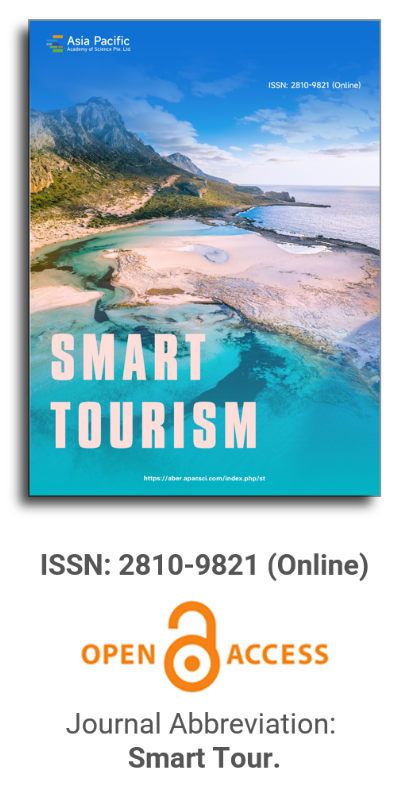


Relationship between competitiveness of destinations and tourism specialization: An analysis in the digital age
Vol 4, Issue 1, 2023
Download PDF
Abstract
Currently, within the tourism market, there is a significant number of destinations that offer the same product, especially in the sun and beach market, so the search for competitiveness must be the objective that allows increasing the arrival of tourists to a destination, becoming one of the main pillars on which tourism policies are based. In this context, this paper aims is to ascertain whether there exists a causal relationship between tourism competitiveness and the influx of tourists to destinations. To achieve this, the Granger causality test is utilized, employing the econometric adaptation conducted by Dumitrescu and Hurlin, utilizing a sample of 18 Mediterranean countries spanning from 2007 to 2019. From the analysis carried out, it is highlighted that there is no causal relationship from tourism competitiveness to the number of tourists received, which is an important finding in the countries of the Mediterranean coast, since tourists do not value competitiveness in these destinations.
Keywords
References
- Zadeh Bazargani RH, Kiliç H. Tourism competitiveness and tourism sector performance: Empirical insights from new data. Journal of Hospitality and Tourism Management 2021; 46: 73–82. doi: 10.1016/j.jhtm.2020.11.011
- Krstic B, Jovanovic S, Jankovic-Milic V, et al. Examination of travel and tourism competitiveness contribution to national economy competitiveness of sub-Saharan Africa countries. Development Southern Africa 2016; 33(4): 470–485. doi: 10.1080/0376835x.2016.1179103
- Nazmfar H, Eshghei A, Alavi S, et al. Analysis of travel and tourism competitiveness index in middle-east countries. Asia Pacific Journal of Tourism Research 2019; 24(6): 501–513. doi: 10.1080/10941665.2019.1590428
- Aguiar-Barbosa A de P, Chim-Miki AF, Kozak M. Two decades of evolution in tourism competitiveness: A co-word analysis. International Journal of Tourism Cities 2021; 7(2): 435–462. doi: 10.1108/ijtc-10-2020-0224
- Andrades L, Sánchez M, Pulido JI. Differentiating Competitiveness through Tourism Image Assessment: An Application to Andalusia (Spanish). Journal of Travel Research 2013; 52(1): 68–81. doi: 10.1177/0047287512451135
- Croes R. Measuring and Explaining Competitiveness in the Context of Small Island Destinations. Journal of Travel Research 2010; 50(4): 431–442. doi: 10.1177/0047287510368139
- Goffi G, Cucculelli M. Explaining tourism competitiveness in small and medium destinations: The Italian case. Current Issues in Tourism 2018; 22(17): 2109–2139. doi: 10.1080/13683500.2017.1421620
- Pérez León VE, Guerrero FM, Caballero R. Tourism competitiveness measurement. A perspective from Central America and Caribbean destinations. Tourism Review 2022; 77(6): 1401–1417. doi: 10.1108/tr-03-2022-0119
- Cárdenas-García PJ. Tourism competitiveness in Mediterranean countries. Analysis of the determining factors (Spanish). Revista de análisis turístico 2011; 12(2): 11–22. doi: 10.53596/jta.v0i12
- Pulido-Fernández JI, Sánchez-Rivero M, Cárdenas-García PJ. Tourism competitiveness in Mediterranean countries: Identification of determining attributes. Actual Problems of Economics 2013; 156(6): 132–142.
- Murphy P, Pritchard MP, Smith B. The destination product and its impact on traveller perceptions. Tourism Management 2000; 21(1): 43–52. doi: 10.1016/S0261-5177(99)00080-1
- Crouch GI. Destination Competitiveness: An Analysis of Determinant Attributes. Journal of Travel Research 2010; 50(1): 27–45. doi: 10.1177/0047287510362776
- Dwyer L, Forsyth P, Rao P. The price competitiveness of travel and tourism: a comparison of 19 destinations. Tourism Management 2000; 21(1): 9–22. doi: 10.1016/S0261-5177(99)00081-3
- Ritchie JRB, Crouch GI. The Competitive Destination: A Sustainable Tourism Perspective. CABI Publishing; 2003. doi: 10.1079/9780851996646.0000
- Daskalopoulou I, Petrou A. Urban Tourism Competitiveness: Networks and the Regional Asset Base. Urban Studies 2009; 46(4): 779–801. doi: 10.1177/0042098009102129
- World Economic Forum. The World Competitiveness Report. World Economic Forum; 2023.
- Im K, Pesaran MH, Shin Y. Testing for unit roots in heterogeneous panels. Journal of Econometrics 2003; 115(1): 53–74. doi: 10.1016/S0304-4076(03)00092-7
- Granger CWJ. Investigating Causal Relations by Econometric Models and Cross-spectral Methods. Econometrica 1969; 37(3): 424. doi: 10.2307/1912791
- Dumitrescu EI, Hurlin C. Testing for Granger non-causality in heterogeneous panels. Economic Modelling 2012; 29(4): 1450–1460. doi: 10.1016/j.econmod.2012.02.014
Supporting Agencies
Copyright (c) 2023 José Carlos Collado-González, Alejandro Alcalá-Ordoñez, Pablo Juan Cárdenas-García
License URL: https://creativecommons.org/licenses/by/4.0/

This site is licensed under a Creative Commons Attribution 4.0 International License (CC BY 4.0).

Prof. Hung-Che Wu
Nanfang College, Guangzhou
China
Indexing & Archiving
Asia Pacific Academy of Science Pte. Ltd. (APACSCI) specializes in international journal publishing. APACSCI adopts the open access publishing model and provides an important communication bridge for academic groups whose interest fields include engineering, technology, medicine, computer, mathematics, agriculture and forestry, and environment.



.jpg)
.jpg)

.jpg)

